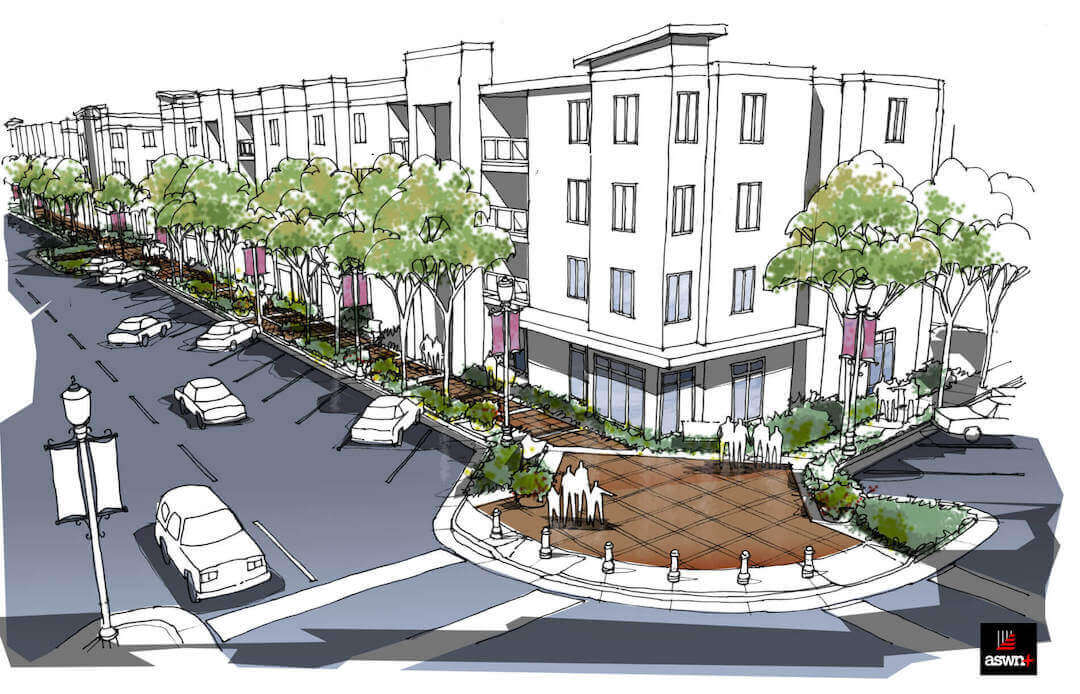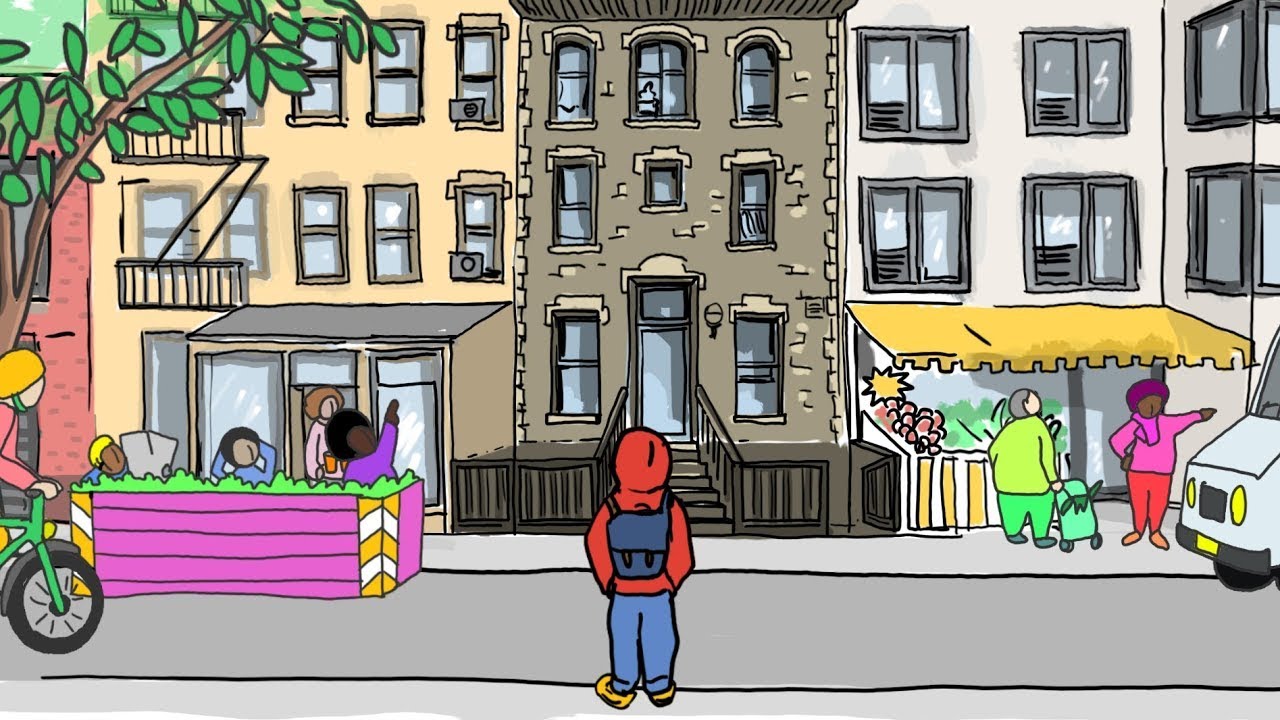Examining The Significance Of Responsive Design In Architecture And Urban Planning
Examining the significance of responsive design in architecture and urban planning is becoming increasingly important as cities become more complex and diverse. As populations continue to grow and become more diverse, urban areas are being designed to accommodate different needs, lifestyles, and cultures.
Author:George EvansMar 29, 2023599 Shares99.7K Views

Examining the significance of responsive design in architecture and urban planningis becoming increasingly important as cities become more complex and diverse. As populations continue to grow and become more diverse, urban areas are being designed to accommodate different needs, lifestyles, and cultures.
Responsive design is a design approach that seeks to create environments that respond to the changing needs of individuals and communities. This approach emphasizes flexibility, adaptability, and sustainability in urban planningand architectural design.
This article will examine the significance of responsive design in architecture and urban planning, including its benefits, challenges, and examples of successful implementation.

What Is Urban Design?
What Is Responsive Design?
Responsive design is a design approach that emphasizes flexibility and adaptability. It involves designing spaces, buildings, and urban environments that can respond to changing needs and conditions.
This can include everything from designing buildings that can change shape depending on the weather to creating urban environments that can adapt to changing patterns of use.
Responsive design is particularly important in the context of climate change and other global challenges. As weather patterns become more unpredictable, and as cities become more crowded and complex, there is a growing need for buildings and urban environments that can adapt to changing conditions.
The Benefits Of Responsive Design In Architecture And Urban Planning
Responsive design is a design approach that has gained immense popularity in the field of architecture and urban planning. It involves creating spaces and structures that can adapt and respond to the changing needs of their users, the environment, and the community. Here are some of the benefits of responsive design in architecture and urban planning:
Improves User Experience
Responsive design allows for the creation of spaces that are tailored to the needs and preferences of their users. This helps to improve the user experience by making spaces more comfortable, efficient, and accessible.
Increases Sustainability
By designing structures that respond to the environment, responsive design can help to reduce energy consumption and increase sustainability. This can include the use of materials that are environmentally friendly, the incorporation of natural ventilation and lighting, and the integration of green spaces.
Enhances Community Engagement
Responsive design also has the potential to enhance community engagement by creating spaces that are more inclusive and accessible. This can help to promote social interaction, improve the quality of life for residents, and foster a sense of community.
Improves Flexibility
Responsive design allows for greater flexibility in the use of space, which can be particularly beneficial in urban environments where space is at a premium. This can include the creation of multi-use spaces that can be adapted to different activities and events.
Enables Future-Proofing
By designing structures that can adapt to changing needs and technologies, responsive design can help to future-proof buildings and infrastructure. This can help to ensure that they remain relevant and useful for years to come.

What is URBAN DESIGN / Famous URBAN DESIGNERS and there THEORY with PDF
Challenges Of Responsive Design In Architecture And Urban Planning
Some of the challenges that come with implementing responsive design in architecture and urban planning include:
- Cost- Responsive design often involves the use of advanced technology and materials, which can be expensive. This can make it difficult for developers to implement responsive design features in their projects, especially in areas with limited budgets.
- Technical Complexity- Responsive design requires a high level of technical expertise to implement. Architects and planners need to have a thorough understanding of the latest materials and technologies in order to create responsive designs that are both functional and aesthetically pleasing.
- Maintenance - Responsive designs often require ongoing maintenance to keep them functioning properly. This can include the replacement of sensors and other components, as well as regular cleaning and upkeep.
- Adaptability- While responsive design can be highly effective at adapting to changing conditions, it is not always easy to predict what those conditions will be. This can make it difficult to design structures that can respond effectively to all possible scenarios.
- Resistance to Change - Some architects and planners may be resistant to the idea of responsive design, either because they are not familiar with the concept or because they are comfortable with traditional design approaches. Overcoming this resistance can be a challenge, especially in established industries with entrenched practices and cultures.
Examples Of Responsive Design In Architecture And Urban Planning
There are many examples of responsive design in architecture and urban planning. One notable example is the Shanghai Tower, which was designed to be flexible and adaptable to changing wind conditions.
The tower features a series of vertical wind turbines that help to stabilize the building in high winds, while also generating energy for the building.
Another example is the High Line in New York City, which is a public park built on a disused elevated railway line.
The park is designed to be responsive to changing patterns of use, with spaces that can be adapted for different activities, such as outdoor performances and art installations.
The Future Of Responsive Design In Architecture And Urban Planning
Responsive design is becoming an increasingly important aspect of architecture and urban planning, as the world becomes more urbanized and the need for sustainable and adaptable design solutions grows.
As technology advances and the challenges facing cities and buildings become more complex, responsive design will continue to evolve and play a critical role in shaping the future of our built environment.
Some of the key trends and developments that are likely to shape the future of responsive design include the growing use of sensors and data analytics to monitor and optimize building performance; the integration of green infrastructure and sustainable materials into building and urban design; and the use of virtual and augmented reality tools to simulate and test design solutions in real time.
Another important trend is the growing emphasis on community engagement and co-design, which involves working closely with local residents, businesses, and other stakeholders to ensure that design solutions are responsive to their needs and aspirations.
This approach has been shown to lead to more sustainable and equitable outcomes, as well as greater social cohesion and resilience in urban areas.
Overall, the future of responsive design in architecture and urban planning is likely to be characterized by a growing focus on sustainability, resilience, and social equity, as well as an increasing reliance on technology and data-driven design solutions.
As cities and buildings continue to face a wide range of challenges in the years ahead, responsive design will play a critical role in creating more livable, sustainable, and resilient environments for all.
People Also Ask
How Does Responsive Design Help In Architecture And Urban Planning?
Responsive design allows architects and urban planners to create buildings and cities that can adapt to changing environmental conditions and user needs. This approach can improve the sustainability and resilience of the built environment, as well as enhance the quality of life for residents.
What Are The Key Principles Of Responsive Design In Architecture And Urban Planning?
The key principles of responsive design include flexibility, adaptability, modularity, and scalability. These principles allow for the creation of buildings and cities that can respond to changing conditions, accommodate different uses and users, and be easily modified or expanded as needed.
How Can Responsive Design Help Address Climate Change In Architecture And Urban Planning?
Responsive design can help address climate change by reducing the environmental impact of buildings and cities, improving energy efficiency, and enhancing resilience to climate-related risks such as extreme weather events. It can also promote sustainable transportation, green infrastructure, and other measures to reduce greenhouse gas emissions.
What Are Some Examples Of Responsive Design In Architecture And Urban Planning?
Examples of responsive design in architecture and urban planning include green roofs, smart buildings, mixed-use developments, and pedestrian-friendly streetscapes. These designs aim to create sustainable, adaptable, and user-centered environments that can enhance the quality of life for residents.
What Are The Challenges Of Implementing Responsive Design In Architecture And Urban Planning?
Challenges of implementing responsive design in architecture and urban planning include cost, political and regulatory barriers, and cultural and social factors. In addition, there may be technical challenges in designing and implementing responsive systems and ensuring that they are reliable and effective.
Final Words
Examining the significance of responsive design in architecture and urban planning has emerged as a crucial aspect of contemporary architecture and urban planning.
The ability to create spaces that can adapt to the needs of the people who use them is essential for creating sustainable and livable environments.
By taking into account the unique challenges and opportunities presented by a given site or context, architects and urban planners can design responsive solutions that prioritize the well-being of the individuals and communities they serve.
As technology continues to advance and our understanding of the built environment evolves, we can expect responsive design to play an increasingly significant role in shaping the places where we live, work, and play.
Jump to
What Is Responsive Design?
The Benefits Of Responsive Design In Architecture And Urban Planning
Challenges Of Responsive Design In Architecture And Urban Planning
Examples Of Responsive Design In Architecture And Urban Planning
The Future Of Responsive Design In Architecture And Urban Planning
People Also Ask
Final Words

George Evans
Author
George Anderson, an exceptional architectural designer, envisions and brings to life structures that transcend the realm of imagination. With an unwavering passion for design and an innate eye for detail, George seamlessly blends form and function, creating immersive spaces that inspire awe.
Driven by a deep appreciation for the interplay of space, light, and materials, George's innovative approach redefines the possibilities of architectural design. His visionary compositions leave an indelible mark, evoking a sense of wonder and transforming the built environment.
George Anderson's transformative designs and unwavering dedication continue to shape the architectural landscape, pushing the boundaries of what is possible and inspiring generations to come.
Latest Articles
Popular Articles